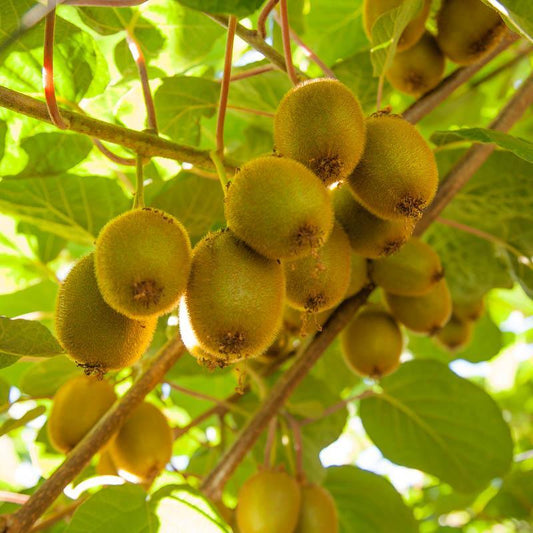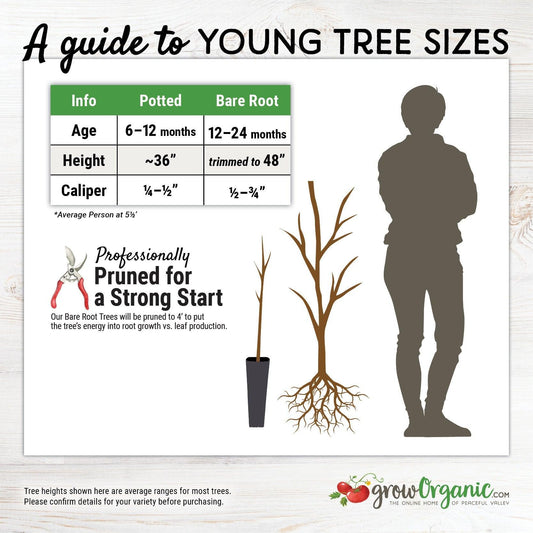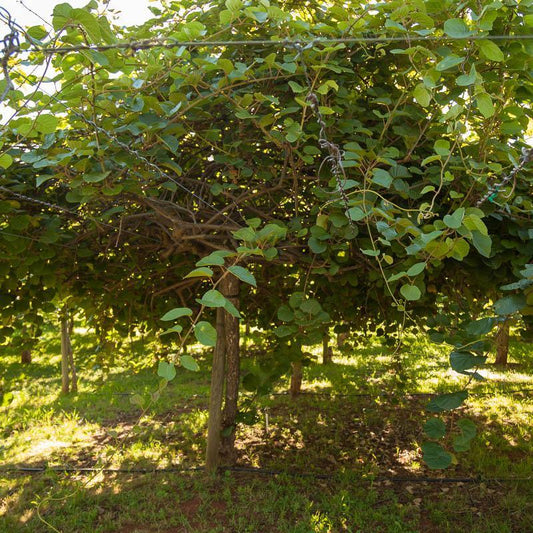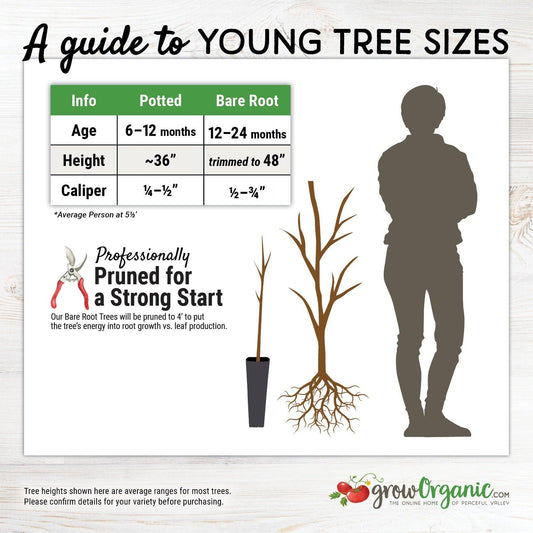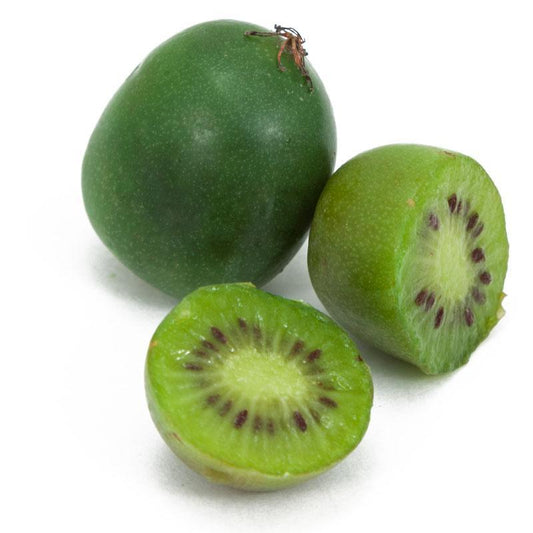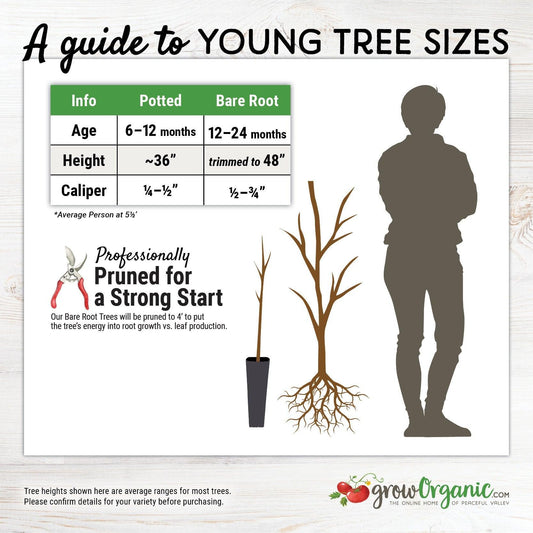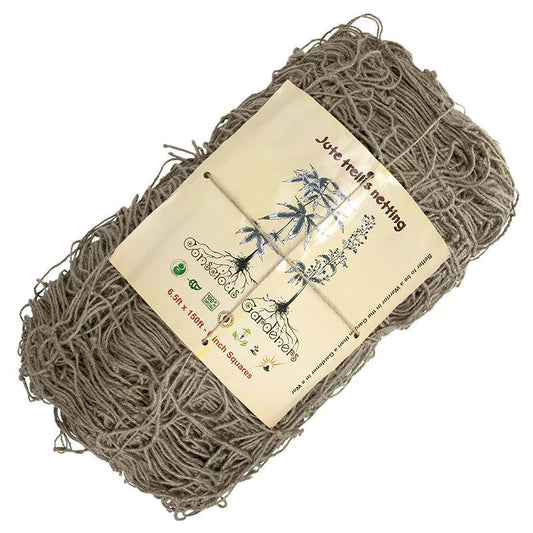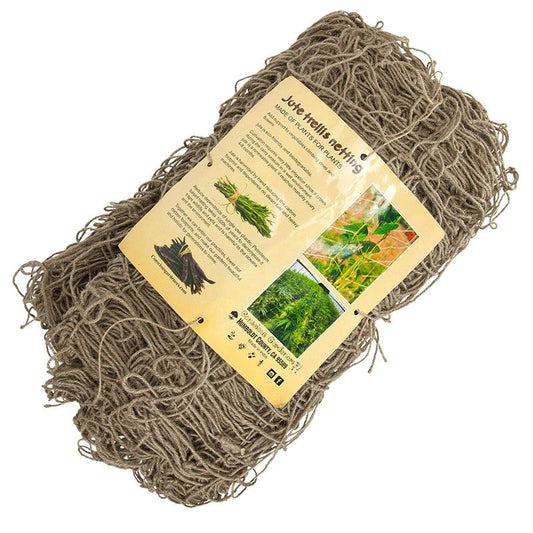How to Start Growing Kiwi's: Choose the Right Kiwi Growing Zone for Success
If you’ve ever wondered whether you can grow kiwis at home, the answer is yes! With the right care and location, you can enjoy homegrown kiwi fruit straight from your own garden. Understanding your kiwi growing zone and how to create the ideal environment for these vigorous vines is key to success.
Kiwis don’t actually grow on trees—they grow on climbing kiwi vines that need support, sunlight, and well-drained soil to thrive. Whether you’re planting hardy varieties or classic fuzzy kiwis, choosing the right conditions can help your vines produce fruit for years to come.

Understanding Kiwi Trees and How They Grow
Do Kiwis Grow on Trees?
Although often called a kiwi tree, kiwis are actually woody vines. These vines can grow up to 30 feet long and require sturdy trellises or arbors to support their growth. So, while we talk about growing a kiwi tree, what you’re really growing is a kiwi vine that produces fruit similar to those you see in grocery stores.
Kiwi Varieties: Hardy vs. Fuzzy
There are several types of kiwis, each adapted to different hardiness zones:
- Hardy Kiwi (Actinidia arguta): These cold hardy vines grow well in USDA Zones 4–9. Their smooth, edible skin and smaller fruits make them perfect for cooler climates. The self-fertile Issai Hardy Kiwi is an excellent choice for home gardeners since it doesn’t require a separate male vine for pollination.
- Fuzzy Kiwi (Actinidia deliciosa): The familiar, fuzzy-skinned kiwi thrives in zones 7–9 and warmer regions. These vines produce larger fruits but require both a male and female plant for pollination. Try pairing the Vincent Female Kiwi Vine with a Tomuri Male Kiwi Vine for reliable fruit production.
For even more detail on kiwi varieties and planting techniques, visit our Kiwi Growing Guide.

Finding the Right Kiwi Growing Zone
Know Your Zone
Kiwis grow best when matched to their ideal kiwi growing zone. The USDA defines these hardiness zones based on average minimum winter temperatures. To find out which zone you’re in, use the What Is My Growing Zone? tool on our website.
- Hardy Kiwis (Actinidia arguta) – Best for cooler areas, Zones 4–9
- Fuzzy Kiwis (Actinidia deliciosa) – Thrive in warmer climates, Zones 7–9
- Arctic Kiwi (Actinidia kolomikta) – Suitable for very cold climates, Zones 3–7
Choosing a variety suited to your climate ensures the vines flower and fruit ripen properly during the growing season.
Temperature and Chill Hour Requirements
Temperature plays a major role in kiwi fruit success. Hardy kiwis tolerate frost better, but frost pockets can still damage young shoots. Protect young plants during early spring when frost risk remains high.
Many kiwi varieties also require a certain number of chill hours to encourage flowering and fruiting. Learn more about how to calculate chill hours in our guide: Chill Hours: What Are They and Why Do They Matter?
How to Grow a Kiwi Tree (Vine)
Despite often being called a "kiwi tree," the kiwi is actually a vigorous woody vine, not a tree at all. The confusion comes from the size and structure of mature kiwi vines, which can grow thick, woody stems and climb trellises or arbors in a tree-like form.
However, kiwis naturally grow as sprawling climbers and need strong support to grow upward. Understanding this is key to giving them the right care and structure from the start.
Soil and Planting Conditions
When growing kiwi, select a sunny, sheltered location with well-drained soil. Kiwis prefer slightly acidic soil enriched with organic matter. Avoid spots where water collects after rain. If your garden soil drains poorly, plant kiwis in raised beds or large containers with potting mix designed for fruiting vines.
Plant your kiwi vines 10–15 feet apart, giving them plenty of space to spread. For container growing, ensure the pot is large enough to support extensive root systems.
Sunlight and Water Needs
Kiwi vines thrive in full sun, which encourages strong vine growth and abundant flowers. Keep soil evenly moist but not waterlogged. During hot weather, deep watering helps maintain healthy vines and prevents fruit drop.

Fertilizing Kiwi Plants
Start fertilizing after the first year of planting. Use organic fertilizers such as compost or organic nitrogen fertilizer to feed your plants naturally. A balanced blend of nutrients—including nitrogen, phosphorus, calcium, magnesium, and potassium—supports vine health and high-quality fruit.
Supplement your feeding routine with Peaceful Valley Organic Liquid Kelp, which strengthens plants and enhances fruit set. Apply it as a foliar spray between bud break and early fruit development.
Avoid synthetic fertilizers, as they can harm beneficial soil microbes and lead to weak, pest-prone growth.
Pruning and Supporting Kiwi Vines
Kiwi vines grow vigorously, often reaching over 20–30 feet, so they need strong supports such as a trellis, arbor, or pergola. Explore our collection of plant supports and trellises to find options suitable for your garden setup.
Most kiwi fruits form on new shoots that grow from one-year-old wood. Prune during dormancy—typically in winter—to remove dead wood and manage vine shape. Avoid pruning after buds begin to swell to prevent sap loss. For detailed guidance, check our article on Planting and Pruning Kiwi and video tutorial How to Grow Kiwi.

Harvesting Kiwi Fruit
Kiwis typically begin to produce fruit between three and six years after planting, depending on the variety and growing conditions. Healthy kiwi plants growing in the right climate and with proper care will eventually yield a reliable crop. Harvesting usually begins in early summer through fall when the fruits are firm but full-sized and ready to harvest.
Pick the fruit before it softens on the vine—kiwi fruits ripen best after harvest. Once picked, let them soften at room temperature for a few days, then store them in the refrigerator. Properly stored kiwis can stay fresh for up to four months.
When the female flowers are well pollinated and the weather is favorable, your vines will reward you with a steady harvest of sweet, tangy fruit that rivals anything from grocery stores.
Conclusion
Learning how to grow kiwi fruit tree at home is rewarding when you know your kiwi growing zone and provide the right conditions. Whether you choose hardy kiwi for colder climates or fuzzy kiwi for warmer zones, success depends on well-drained soil, full sun, and proper nutrition.
Enrich the soil with organic matter, apply liquid kelp during the growing season, and prune regularly to support healthy female vines, which are the ones that bear fruit. Explore our full collection of Kiwi Vines to find the right variety for your garden.


